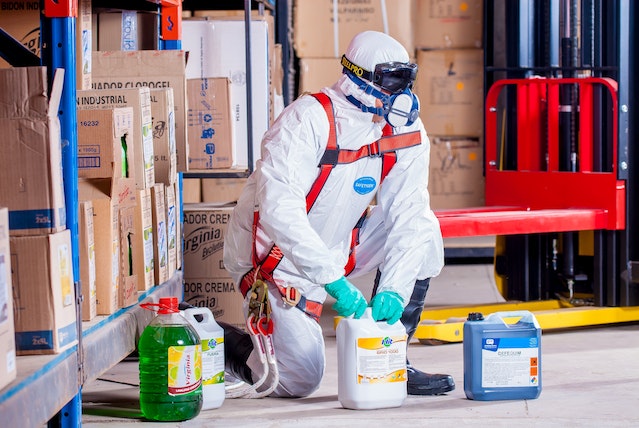

Handling hazardous materials may be unavoidable in certain industries. It’s important to ensure that you and your employees are aware of how to handle hazardous materials in these situations. There are many ways to achieve this, but we will focus on the most important ones.
Legal and Regulatory Framework
The handling of hazardous materials is governed and regulated by laws and regulations set out by agencies like OSHA and EPA. OSHA’s Hazard Communication Standard requires employers to inform and train employees on the hazards of the materials that they handle. Process Safety Management is a standard set by OSHA that must be followed to prevent accidents and manage highly hazardous chemicals.
The EPA has a major role to play in regulating dangerous materials. The Resource Conservation and Recovery Act, or RCRA, regulates the generation, transportation and disposal of hazardous materials. RCRA compliance minimizes the environmental impact while protecting human health. CERCLA addresses cleanup of hazardous substances and assigns responsibility to the responsible parties.
It is important to comply with these regulations in order to protect the health and safety of employees, as well as prevent pollution. Non-compliance may result in fines, legal actions and penalties. This can have financial and reputational implications.
Labeling, storage and transportation are all common compliance requirements. Employee training is also required. Labels should accurately communicate the hazards of materials. It is important to adhere to transport regulations and store materials in designated areas. Compliance is essential. Employees must be trained on proper handling procedures, and records of inspections and incidents, as well as training and documentation are required.
By adhering to the legal framework and regulations for handling hazardous material, you can reduce risks, protect the environment, increase employee safety and avoid legal liability.
Safe Handling Procedures
It is important to follow safety guidelines when handling hazardous materials to reduce risks.
- Train and educate: Make sure that all personnel handling hazardous materials are properly trained and educated on the risks involved, safe handling procedures and emergency response protocols.
- Risk Assessment: Perform a thorough assessment of risks to identify possible hazards and develop control measures.
- Handling Procedures: Follow the established procedures when handling, transferring and manipulating hazardous substances to prevent accidents and minimize exposure.
- Ventilation Make sure that the work area is adequately ventilated to reduce airborne contaminants.
- Housekeeping Keep your workspace clean to reduce the risk of spills, leaks or cross contamination.
- Disallow smoking, drinking or eating: Adopt strict policies to prevent the ingestion of hazardous substances.
- Prepare for emergencies: Create and communicate emergency response plans including evacuation protocols, spill response protocol, and the use safety showers and eyewash stations.
Safety Equipment
Personal protective equipment (PPE), or personal safety gear, is essential to minimize the risks of handling hazardous materials. To begin with, determine the PPE needed to handle each hazardous material. In order to determine what equipment is needed, it’s necessary to assess the material and its potential hazards. Depending on the material, different types of protective equipment may be required.
When dealing with airborne dangers, respiratory protection is essential. To prevent the inhalation toxic gases, particulates, or fumes that could be harmful to respiratory health, it is important to use respirators or masks. Inhaling hazardous substances can have long-term effects on your health. You’ll typically want to invest in a multi-purpose mask.
Wearing protective clothing to handle hazardous materials is also important. Chemical-resistant gloves or suits, aprons or coveralls create a physical barrier to hazardous substances. These gloves are designed to protect against direct contact, and prevent the substance from penetrating the clothing. This reduces the risk of skin irritations, burns or absorption.
By following these guidelines and using appropriate personal protective gear, you can reduce the risk of handling hazardous substances. This will protect the health and safety of those who work with or near these substances.
Prioritize Safety
Most accidents involving hazardous materials are caused by ignorance or misinformation. Do not let ignorance or misinformation be the cause of an accident with hazardous materials. Before you begin the handling process, make sure to read up on as much safety information as possible. You can then get on with the job without having to worry about accidents.





